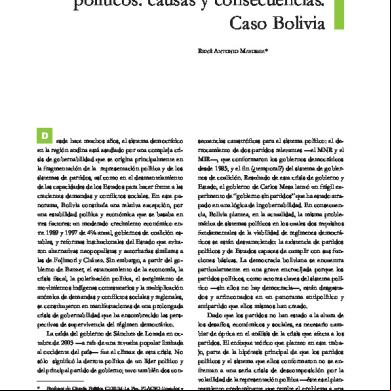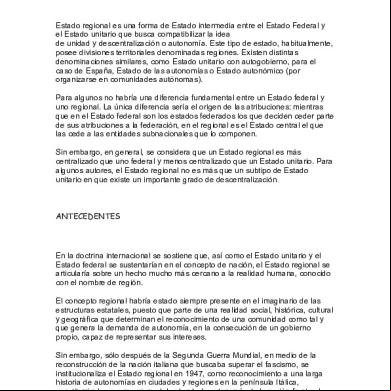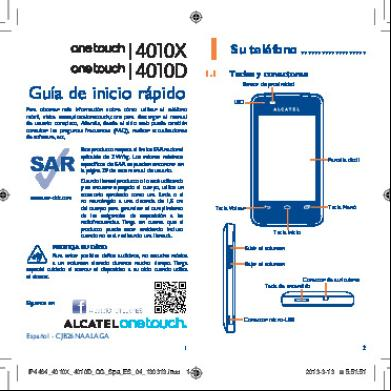Laravel 5
Step 3: the Event class and its handler in EventServiceProvider class. We now need to the event and its handler class in app\Providers\EventServiceProvier.php file. This file contains an array called $listen. In this array we need to add event class as key and event handler class as its value.
Step 4: Fire the event. Last step is to fire the event with Event facade. fire() method hsould be called which takes object of the event class. Event can be fired as shown below: Event::fire(<Event Class Object>); <Event Class Object> should be replaced with the object of the event class.
114
Laravel
Example Step 1: Create a controller called CreateStudentController by executing the following command.
php artisan make:controller CreateStudentController --plain
Step 2: After successful execution, you will receive the following output:
Step 3: Copy the following app/Http/Controllers/CreateStudentController.php file.
code
in
app/Http/Controllers/CreateStudentController.php
namespace App\Http\Controllers;
use Illuminate\Http\Request; use DB; use App\Http\Requests; use App\Http\Controllers\Controller; use App\Events\StudentAdded; 115
Laravel
use Event;
class CreateStudentController extends Controller { public function insertform(){ return view('stud_add'); }
public function insert(Request $request){ $name = $request->input('stud_name'); DB::insert('insert into student (name) values(?)',[$name]); echo "Record inserted successfully.
"; echo ' Click Here to go back.';
//firing an event Event::fire(new StudentAdded($name)); } }
Step 4: Create an event called StudentAdded by executing the following command.
php artisan make:event StudentAdded
Step 5: After successful execution, you will receive the following output: 116
Laravel
Step 6: The above command will create an event App\Events\StudentAdded.php. Copy the following code in that file.
file
at
App\Events\StudentAdded.php
namespace App\Events;
use App\Events\Event; use Illuminate\Queue\SerializesModels; use Illuminate\Contracts\Broadcasting\ShouldBroadcast;
class StudentAdded extends Event { use SerializesModels;
public $name;
public function __construct($name) { $this->name = $name; } 117
Laravel
public function broadcastOn() { return []; } }
Step 7: Create an event handler called HandleNewStudentAdded by executing the following command. php artisan handler:event HandlerNewStudentAdded --event=StudentAdded
Step 8: After successful execution, you will receive the following output:
Step 9: The above command will create an event handler file at app\Handlers\Events\HandleNewStudentAdded.php. Copy the following code in that file. app\Handlers\Events\HandleNewStudentAdded.php
namespace App\Handlers\Events;
use App\Events\StudentAdded; use Illuminate\Queue\InteractsWithQueue; use Illuminate\Contracts\Queue\ShouldQueue; 118
Laravel
class HandleNewStudentAdded { protected $name;
public function __construct() { // }
public function handle(StudentAdded $event) { $this->name = $event->name; echo "
New Student added in database with name: ".$this->name; } }
Step 10: We now need to add the event class and its handler class in a file stored at app\Providers\EventServiceProvider.php. Notice the line in bold font and add that line in the file. app\Providers\EventServiceProvider.php
namespace App\Providers;
use Illuminate\Contracts\Events\Dispatcher as DispatcherContract; use Illuminate\Foundation\\Providers\EventServiceProvider as ServiceProvider;
class EventServiceProvider extends ServiceProvider { /** * The event listener mappings for the application. * * @var array */ 119
Laravel
protected $listen = [ 'App\Events\SomeEvent' => [ 'App\Listeners\EventListener', ], 'App\Events\StudentAdded' => [ 'App\Handlers\Events\HandleNewStudentAdded', ], ];
/** * any other events for your application. * * @param
\Illuminate\Contracts\Events\Dispatcher
$events
* @return void */ public function boot(DispatcherContract $events) { parent::boot($events);
// } }
Step 11: Add the following lines in app/Http/routes.php. app/Http/routes.php Route::get('event','CreateStudentController@insertform'); Route::post('addstudent','CreateStudentController@insert');
Step 12: Visit the following URL to test the event. http://localhost:8000/event
Step 13: After visiting the above URL, you will receive the following output:
120
Laravel
Step 14: Add the name of student and click the “Add student” button which will redirect you to the below screen. Look at the line highlighted in gray color. We have added this line in our handle method of HandleNewStudentAdded class which indicates that statements are executed in handle method when an event is fired.
121
Laravel
24. Laravel – Facades
Facades provide a "static" interface to classes that are available in the application's service container. Laravel "facades" serve as "static proxies" to underlying classes in the service container, providing the benefit of a terse, expressive syntax while maintaining more testability and flexibility than traditional static methods.
How to create Facade The following are the steps to create Facade in Laravel.
Step 1: Create PHP Class File.
Step 2: Bind that class to Service Provider.
Step 3: that ServiceProvider to Config\app.php as providers.
Step 4: Create Class which lluminate\\Facades\Facade.
Step 5: point 4 to Config\app.php as aliases.
is
this
class
extends
to
Facade Class Reference Laravel ships with many Facades. The following are the in-built Facade class references. Facade
Class
App Artisan Auth Auth (Instance) Blade
Illuminate\Foundation\Application Illuminate\Contracts\Console\Kernel Illuminate\Auth\AuthManager Illuminate\Auth\Guard
Bus Cache Config Cookie Crypt DB DB (Instance) Event File Gate Hash Input Lang Log Mail
Service Container Binding app artisan auth
Illuminate\View\Compilers\BladeCompile r Illuminate\Contracts\Bus\Dispatcher Illuminate\Cache\Repository Illuminate\Config\Repository Illuminate\Cookie\CookieJar Illuminate\Encryption\Encrypter Illuminate\Database\DatabaseManager Illuminate\Database\Connection
blade.compiler
Illuminate\Events\Dispatcher Illuminate\Filesystem\Filesystem Illuminate\Contracts\Auth\Access\Gate Illuminate\Contracts\Hashing\Hasher Illuminate\Http\Request Illuminate\Translation\Translator Illuminate\Log\Writer Illuminate\Mail\Mailer
events files
cache config cookie encrypter db
hash request translator log mailer 122
Laravel
Queue Queue (Instance) Queue (Base Class) Redirect Redis Request Response Route Schema Session Session (Instance) Storage URL Validator Validator (Instance) View View (Instance)
Illuminate\Auth\s\Bro ker Illuminate\Queue\QueueManager Illuminate\Queue\QueueInterface
auth. queue
Illuminate\Queue\Queue Illuminate\Routing\Redirector Illuminate\Redis\Database Illuminate\Http\Request Illuminate\Contracts\Routing\ResponseF actory Illuminate\Routing\Router Illuminate\Database\Schema\Blueprint Illuminate\Session\SessionManager Illuminate\Session\Store
redirect redis request
Illuminate\Contracts\Filesystem\Factory Illuminate\Routing\UrlGenerator Illuminate\Validation\Factory Illuminate\Validation\Validator
filesystem url validator
Illuminate\View\Factory Illuminate\View\View
view
router session
Example Step 1: Create a service provider called TestFacadesServiceProvider by executing the following command. php artisan make:provider TestFacadesServiceProvider
123
Laravel Step 2: After successful execution, you will receive the following output:
Step 3: Create a class called “TestFacades.php” at “App/Test”.
App/Test/TestFacades.php
class TestFacades{ public function testingFacades(){ echo "Testing the Facades in Laravel."; } } ?>
Step 4: Create a Facade class called “TestFacades.php” at “App/Test/Facades”.
App/Test/Facades/TestFacades.php
namespace app\Test\Facades; 124
Laravel
use Illuminate\\Facades\Facade;
class TestFacades extends Facade{ protected static function getFacadeAccessor() { return 'test'; } }
Step 5: Create a Facade “App/Test/Facades”.
class called
“TestFacadesServiceProviders.php” at
App/Providers/TestFacadesServiceProviders.php
namespace App\Providers; use App; use Illuminate\\ServiceProvider;
class TestFacadesServiceProvider extends ServiceProvider { public function boot() { // }
public function () { App::bind('test',function() { return new \App\Test\TestFacades; }); } }
125
Laravel
Step 6: Add a service provider in a file config/app.php as shown in the below figure. config/app.php
Step 7: Add an alias in a file config/app.php as shown in the below figure. config/app.php
Step 8: Add the following lines in app/Http/routes.php. app/Http/routes.php Route::get('/facadeex', function(){ return TestFacades::testingFacades(); });
126
Laravel
Step 9: Visit the following URL to test the Facade. http://localhost:8000/facadeex
Step 10: After visiting the URL, you will receive the following output:
127
25. Laravel – Security
Laravel
Security is important feature while deg web applications. It assures the s of the website that their data is secured. Laravel provides various mechanisms to secure website. Some of the features are listed below:
Storing s: Laravel provides a class called “Hash” class which provides secure Bcrypt hashing. The can be hashed in the following way.
$ = Hash::make('secret');
make() function will take a value as argument and will return the hashed value. The hashed value can be checked using the check() function in the following way.
Hash::check('secret', $hashed)
The above function will return Boolean value. It will return true if matched or false otherwise. Authenticating s: The other main security features in Laravel is authenticating and perform some action. Laravel has made this task easier and to do this we can use Auth::attempt method in the following way.
if (Auth::attempt(array('email' => $email, '' => $))) { return Redirect::intended('home'); } The Auth::attempt method will take credentials as argument and will those credentials against the credentials stored in database and will return true if it is matched or false otherwise.
CSRF Protection/Cross-site request forgery (XSS): Cross-site scripting (XSS) attacks happen when attackers are able to place client-side JavaScript code in a page viewed by other s. To avoid this kind of attack, you should never trust any submitted data or escape any dangerous characters. You should favor the doublebrace syntax ({{ $value }}) in your Blade templates, and only use the {!! $value !!} syntax, where you're certain the data is safe to display in its raw format.
Avoiding SQL injection: SQL injection vulnerability exists when an application inserts arbitrary and unfiltered input in an SQL query. By default, Laravel will protect you against this type of attack since both the query builder and Eloquent use 128
Laravel PHP Data Objects (PDO) class behind the scenes. PDO uses prepared statements, which allows you to safely any parameters without having to escape and sanitize them.
Cookies – Secure by default: Laravel makes it very easy to create, read, and expire cookies with its Cookie class. In Laravel all cookies are automatically signed and encrypted. This means that if they are tampered with, Laravel will automatically discard them. This also means that you will not be able to read them from the client side using JavaScript.
Forcing HTTPS when exchanging sensitive data: HTTPS prevents attackers on the same network to intercept private information such as session variables, and as the victim.
129










